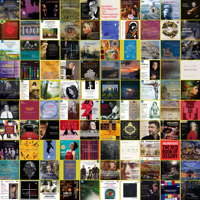 UPDATES: There's a new feature every day at Classical Music Daily. Read about the various ways we can keep in touch with you about what's happening here.
UPDATES: There's a new feature every day at Classical Music Daily. Read about the various ways we can keep in touch with you about what's happening here.
 DISCUSSION: What is a work? John Dante Prevedini leads a discussion about The performing artist as co-creator, including contributions from Halida Dinova, Yekaterina Lebedeva, Béla Hartmann, David Arditti and Stephen Francis Vasta.
DISCUSSION: What is a work? John Dante Prevedini leads a discussion about The performing artist as co-creator, including contributions from Halida Dinova, Yekaterina Lebedeva, Béla Hartmann, David Arditti and Stephen Francis Vasta.
 SPONSORED: Letter to Louise Talma (Never Sent) - by Jenna Orkin.
SPONSORED: Letter to Louise Talma (Never Sent) - by Jenna Orkin.
All sponsored features >>
Robert, Clara and the Others
GIUSEPPE PENNISI reports on an Accademia Filarmonica Romana concert in Rome
This year, the Accademia Filarmonica Romana - the Roman Philharmonic Academy - turns two hundred years old. The exact date of the establishment of the institution is 5 December; the festivities, therefore, will be between the end of this year and the beginning of the next. Much depends on the health situation. In fact, a special program for the anniversary has long been thought of, but since March 2020, musical activities have been in a cloud of uncertainty. The Accademia Filarmonica Romana was one of the first to reopen its doors, as soon as Government regulations allowed it. It started again with live music from Sunday 9 May 2021 in Sala Casella. The program is the new project Lessico Schumann (Lexicon Schumann) curated by Oreste Bossini. It encompasses six concert-meetings on Sunday afternoon at 5pm until 6 June (to which is added an appointment on Thursday 3 June at 7.30pm) to shed light on the multifaceted artistic personality of one of the most important musicians of the Romantic period as well as of the history of music.
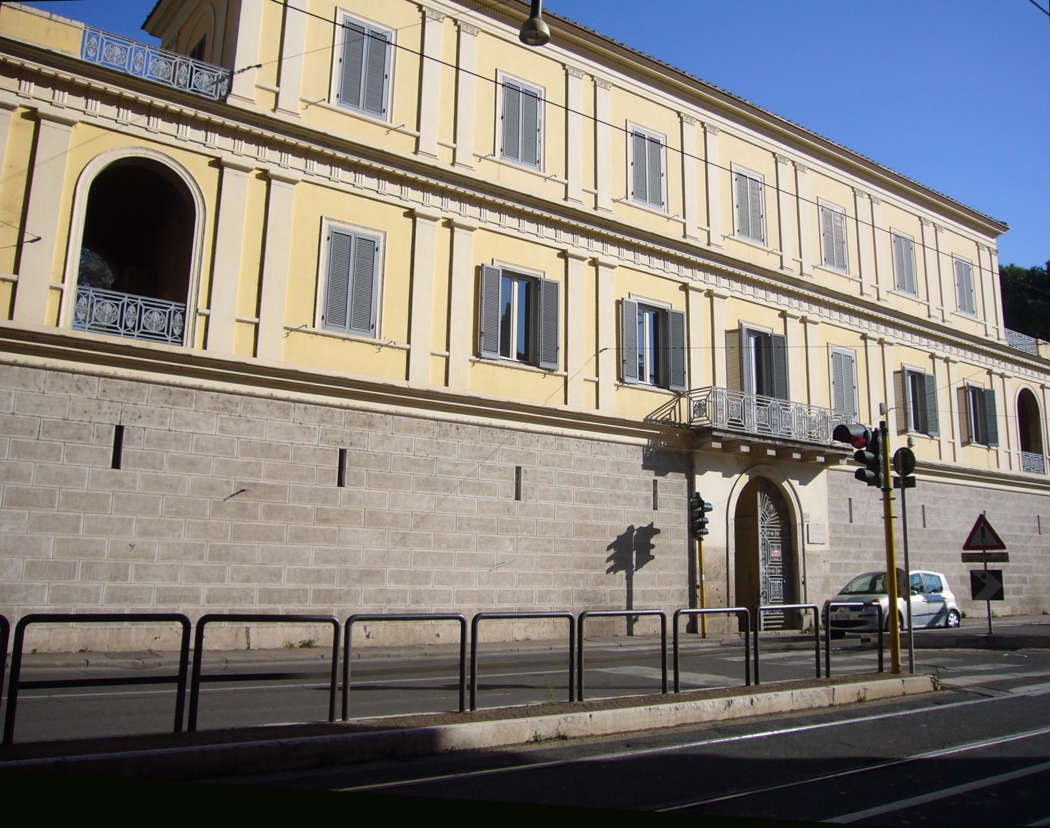
The front of Casina Vagnuzzi, headquarters of Accademia Filarmonica Romana, in Via Flaminia, Rome
Journalist and writer, collaborator of Rai Radio3 and numerous Italian musical institutions, Bossini chooses some emblematic words of Robert Schumann's relationship with the world, 'as if they were a thread of Arianna to follow so as not to lose the way in the depths of music always emotionally tumultuous'. In the concert-meetings, the story telling alternates with music by Schumann and composers dear to him, such as Johannes Brahms and Franz Liszt, but also compositions by his wife, Clara Wieck. They are entrusted to young Italian performers. The project makes use of the media partnership of Rai Radio3 which broadcasts the entire cycle of meetings.
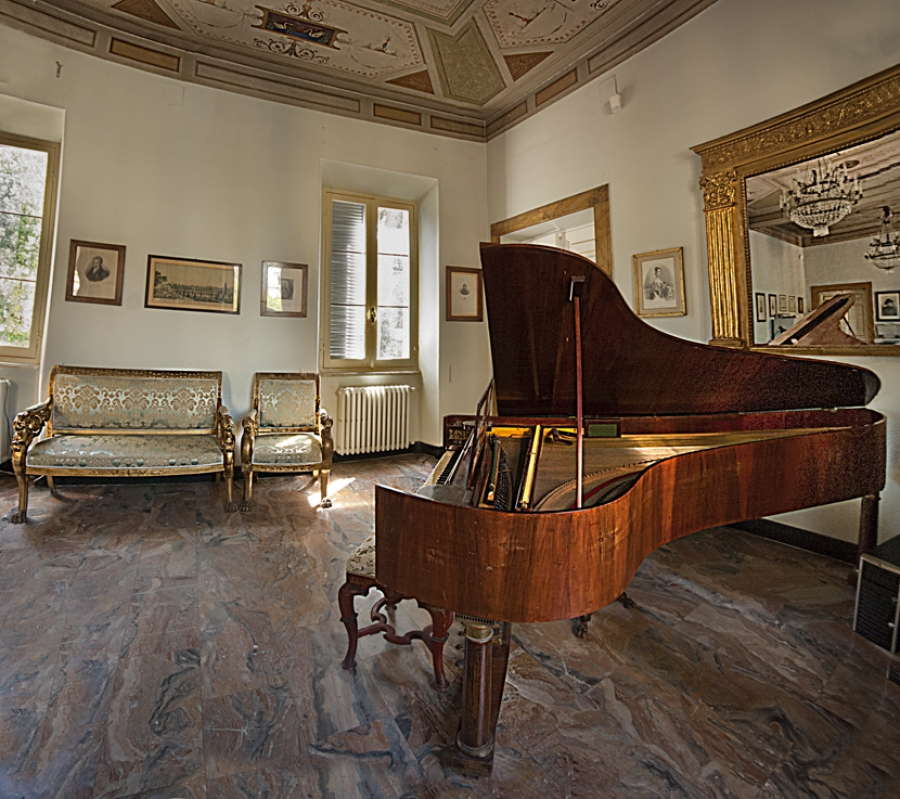
The interior of Casina Vagnuzzi
I went to the 16 May 2021 concert in Sala Casella. The theme was the enigma. Schumann has always been attracted to puns, anagrams, cipher codes and secret languages. From the first piano cycle, the Abegg Variations Op 1, he endeavoured to establish a code for tying people's names to musical notes, which in German musical handwriting, as well as in English, correspond to letters of the alphabet. The recipient of most of his symbolic fantasy is obviously his wife Clara, the cornerstone of his intellectual and affective life. Around Clara, a web of private references, of implicit tributes, of secret dialogues traceable in their respective works has developed. The enigmatic musical relationships between Robert and Clara become even more intricate and complex with the arrival of the young Brahms, who in the last glimpse of Schumann's life assumes an essential role within the delicate balance of the couple.
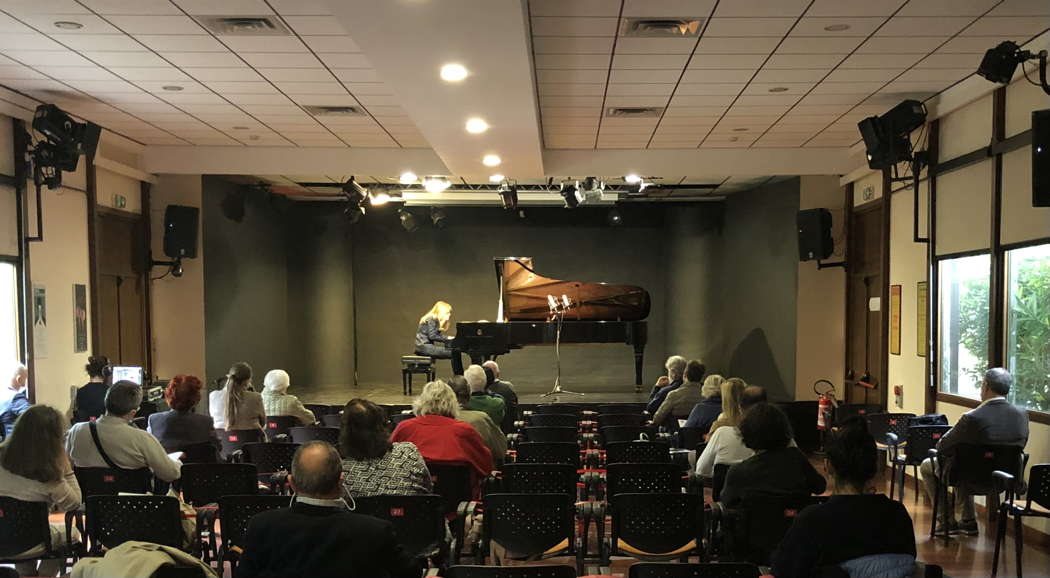
Costanza Principe performing at the 16 May 2021 Accademia Filarmonica Romana concert
Lavinia Bertulli and Costanza Principe alternated on the piano in the performance of Impromptus on a Romance by Clara Wieck Op 5 by Schumann - in the second version that the German composer prepared in 1850. We also heard the Variations in A sharp minor on a theme by Schumann Op 20 that Clara Schumann composed in 1853 and the Sixteen Variations in A minor on a theme by Schumann Op 9 (1854) by Johannes Brahms. Thus, three different works that correspond to three very different phases of the life and artistic experience of the composer and theorist of German romantic music.
The first piece, performed with great ability by Costanza Principe, is an 'improvisation' of a young man in love with a girl much younger than himself. It is a 'larghetto' in A composed in 1833. Schumann composed a second version from 1850; this second version is the one performed. Costanza Principe played it with the youthful exuberance of the homage to the beloved by a feeble young man.

Costanza Principe
The second piece is Clara's answer (also in 1850) to the homage: seven delicate variations, following the classical pattern, performed with sweetness by Lavinia Bertulli. In short, a dialogue of two lovers on which a storm was about to arrive with the aggravation of the mental disorders that would lead the composer first to an attempted suicide and then to internment in the asylum.
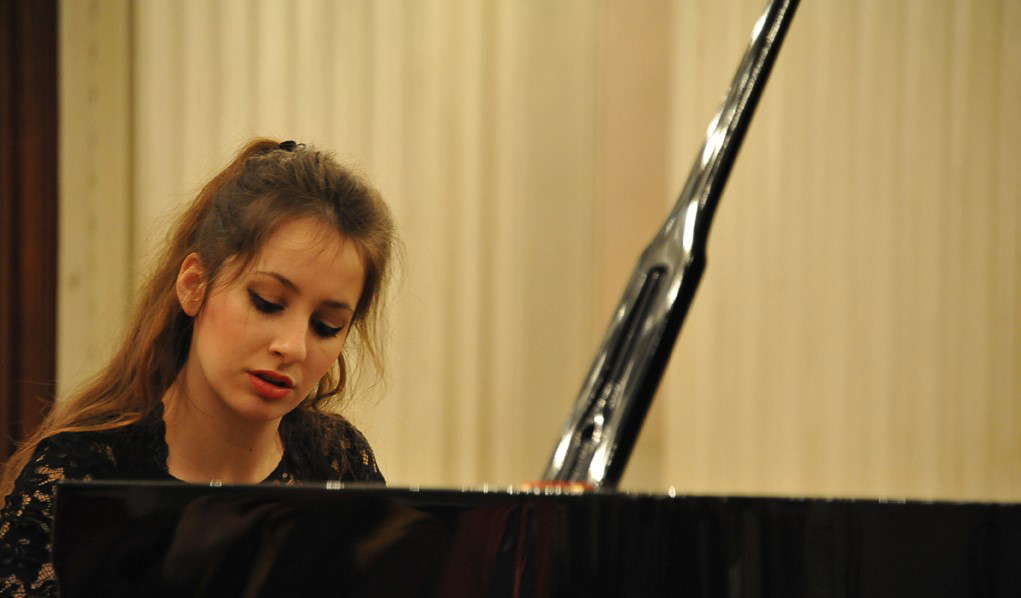
Lavinia Bertulli. Photo © 2021 Gianfranco Gori
The third piece, performed with passion by Costanza Principe, is by Johannes Brahms, Robert's pupil. It was composed at the time of the personal and family tragedy - Schumann’s internment in a mad house and, after two years, his death. It is connected to the initial piece, variations on the youthful 'larghetto' but not to be understood in the classical sense. As Constance Prince has shown, it is a free form, almost a 'capriccio', in which various tempi alternate, from a lively central part and a melancholy final adage. There was a lot of applause.
On 17 May 2021, the Italian Government lifted many restrictions, and promptly the Accademia Filarmonica Romana announced a program for June and July: a concert every evening in collaboration with the major foreign cultural institutes present in Rome.
Copyright © 19 May 2021
Giuseppe Pennisi,
Rome, Italy

MORE CLASSICAL MUSIC ARTICLES ABOUT ROME


